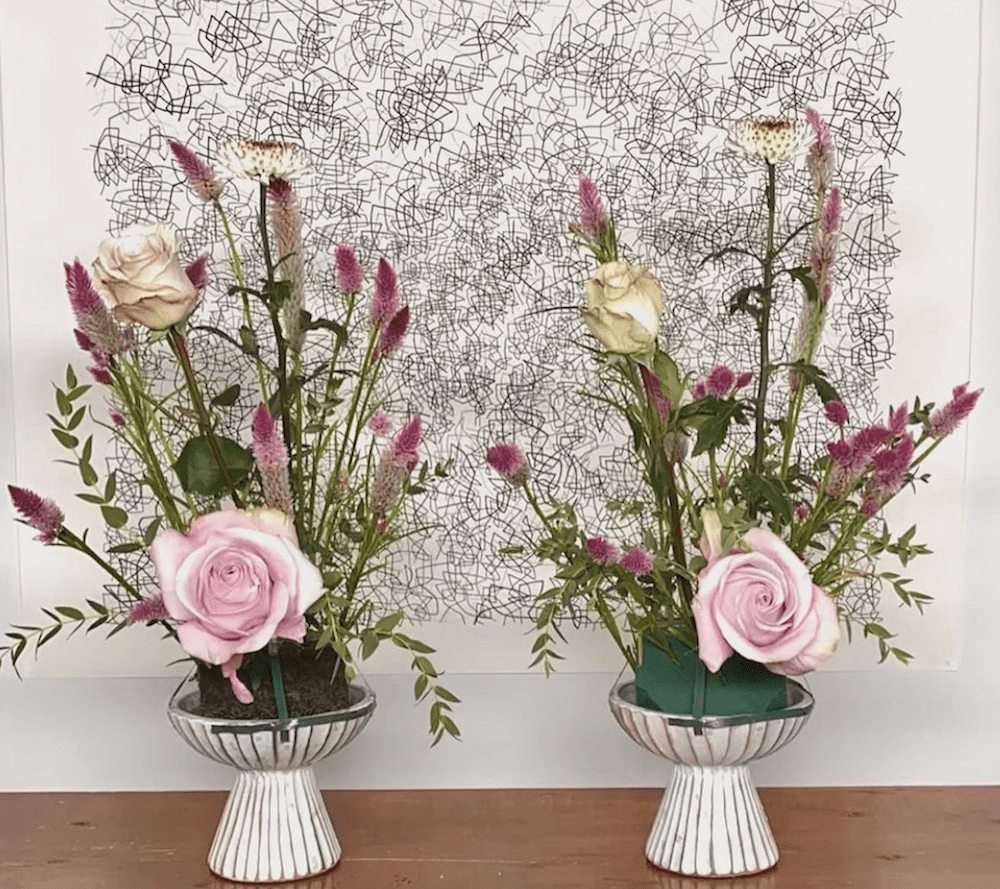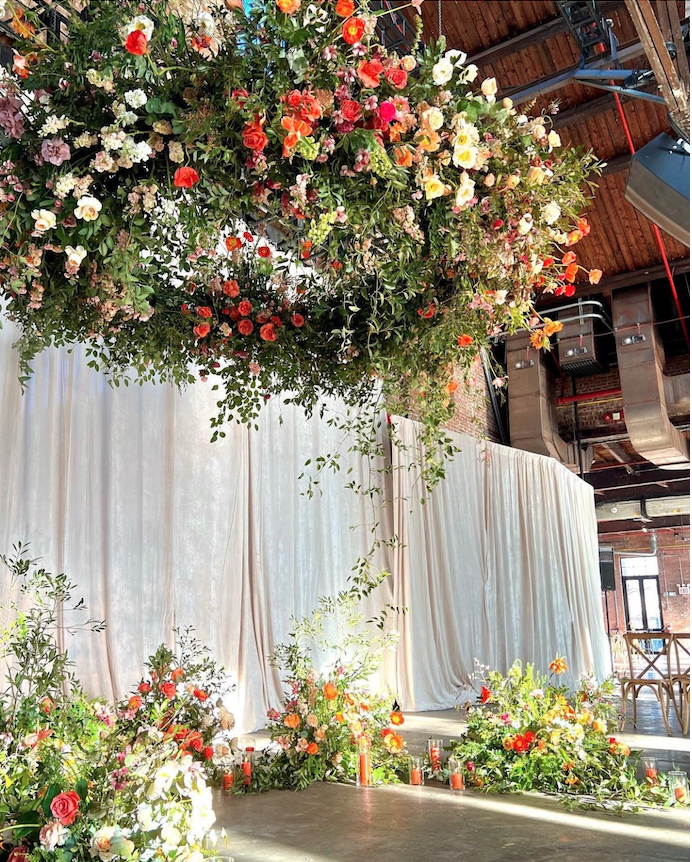Trending Sustainable Options for Flower Arrangements
By Jill Brooke

Boston’s Cass School of Floral Design and New York Flower School are some of the role-modeling educators encouraging their students to employ eco-friendly sustainability practices.
This is really education through innovation.
Both leading floral schools, as well as others, have announced that they will use Agra wool as an alternative to the ubiquitous green foam blocks that have been routinely used to hold flowers intact – particularly useful for wedding events. The Agra wool is 100% natural and biodegradable, unlike the green foam blocks that had plastic derivatives and weren’t bio-degradable.

“Sustainability is the future,” says Calvert Crary, owner of New York Floral School in New York and Los Angeles.
Adds Tyke Patriquin, Administrative Director, Cass School of Floral Design, “It’s exciting to introduce our students to the new eco-friendly floral foams such as Agrawool. which is a wonderful tool for our industry to help our planet stay as green as possible.”
Yes, Oasis, the primary producer of green foam has gotten a bad rap because the foam that revolutionized the industry decades ago didn’t break down sustainably. But we must put things in context. Even Oasis has recognized this widespread desire and created better biodegradable alternatives.
“Having been in the floral industry for 80 years, we remember the transition in the late 1950’s from natural holding devises such as chicken wire to Oasis floral foam,” says Patriquin. “In the late 1950’s the types of flowers and foliage available to florists increased exponentially with advances in global transportation and technology. During this time, florists went from primarily having locally grown in-season flowers to having a huge variety of out-of-season flowers. Floral foam provided a long-lasting water source for these newly available flowers that prior holding methods did not.”
Yes, the foam created a boost to design and versatility since florists could insert flowers at all angles, – not just vertically. This opened up creative opportunities for constructing flowers hanging from ceilings and pop-up walls etc. that we love at weddings at events.
But as Professor Ben Campbell from the Department of Agricultural and Applied Economics at the University of Georgia confirms, the younger generation of flower lovers, buyers and professionals entering the industry cares deeply about sustainability and in the law of numbers, it has become good business and policy to be conscious of eco-friendly practices.
“As younger consumers purchase flowers, many are focused on not only a flowers aesthetics but the story behind the flower, such as how and where it was produced,” he says. “For these generations of flower buyers, production practices are taking on an ever growing importance in shaping what they purchase and what they are demanding from suppliers and retailers.”
It is why veteran florist Kirsten Van Dijk, who is the only distributor in the U.S. of Agra Wool, through her company, “New Age Floral,” sought out alternatives.
“We needed a transformation and a good option to transition towards more eco-friendly practices,” she says. “Little things can have a big effect” and it all adds up.
Because of her passion for helping the planet, Van Dijk has done an impressive job of convincing many to use the alternative bricks that are made from basalt wool with plant-based starch binders. The industry has paid attention to both her success and efforts. She also unveiled the Oschun Pouch, which can be used for ceiling installations among many uses.

However, using these alternatives requires some tinkering because it isn’t as easy to manipulate. Adjustments need to be made.
Trendsetters like Ingrid Carozzi of Tin Can Studios in Brooklyn, New York, Holly Chapple in Loudoun County, Virginia and Kiana Underwood of Tulipina in Lake Como and New York have been role models to show florists and the public how one can achieve a beautiful outcome using eco-friendly options.
It is not only bio-degradable foam that is driving research and a “new focus in sustainability,” as veteran flower entrepreneur Alex Frost calls it.
“The industry is shifting away from plastic to paper options for wrapping flowers,” he points out, noting that collectively this reduces carbon footprints. Customers also notice the efforts and applaud them. Even pots are becoming bio-degradable with partnerships with Ellepot, Ahlstrom-Munksjö, and OrganoClick. A new market for hemp twine is also trending over the paper-covered wire.

Furthermore, what’s old again becomes new again. Holding devices such as chicken wire or floral mesh are regaining popularity. In fact, veteran wedding planner Holly Chapple has also created an alternative known as the “egg” to hold flowers together.
“There’s also a new product by Oasis called Floral Mesh which is more pliable than the chicken wire,” adds Tyke Patriquin.
Plus the public is embracing styles that include foraged branches and twigs, along with leaves, that can be used to construct grids as well.
Will there be a future with 100% sustainability? It’s trending that way but in the near future, it’s also important not to be the judgment police. Instead, applaud efforts by florists throughout the country to adapt and find ways to do business and do good.
As florist Carrie Wilcox notes, “It’s a process,” she says. “But florists care about nature which is why we are in this industry – to create beauty and improve the environment.”

Jill Brooke is a former CNN correspondent, Post columnist and editor-in-chief of Avenue and Travel Savvy magazine. She is an author and the editorial director of FPD, floral editor for Aspire Design and Home magazine and contributor to Florists Review magazine.
